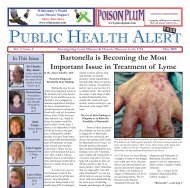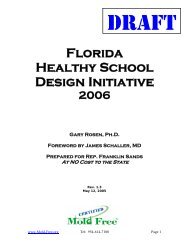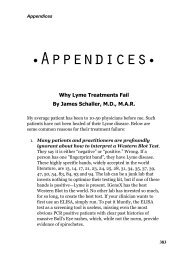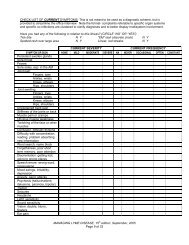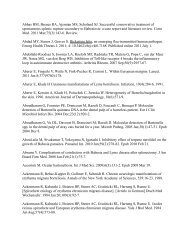Download Here - James L. Schaller, M.D., M.A.R., P.C
Download Here - James L. Schaller, M.D., M.A.R., P.C
Download Here - James L. Schaller, M.D., M.A.R., P.C
You also want an ePaper? Increase the reach of your titles
YUMPU automatically turns print PDFs into web optimized ePapers that Google loves.
Environmentally Friendly Mold Remediation Techniques That Significantly Reduce Childhood Asthmadebris, and moisture may collect beyond the usual amounts expected.And since some HVAC system components may be inaccessible forperiodic inspection, they are particularly susceptible to mold growth.An evaluation of the HVAC system is typically done for any mold problem,regardless of severity. In our experience 80-90% of the time people getsick from mold the AC and/or ducts are contaminated with mold.In particular, the entire HVAC system should be assessed for its rolein the moisture problem(s). Major problems from air leaks in the ACreturn air system when the air handler or return air ducts are locatedin a non-conditioned space are common. As moist outside air enters(leaks into) the system and mixes with cold AC air, condensationoccurs followed by mold growth on dust and dirt in the system or ducts.In some cases, a reservoir of spores or location of growth may be theinsulation sometimes used to line interior airstream surfaces of airconveyanceducts. If such lining (or any other non-smooth orporous airstream surface) is colonized by mold growth, it should beremoved and discarded.If mold colonization on fiberglass duct board is limited, someremediators clean and then coat with Foster 40-20 or DP2545 –which are thick coat encapsulants that include a fungicide.The following HVAC system components should be inspected forgrowth, moisture, and relevant defects, and cleaned or replaced as needed.• Outdoor air intakes• Filters• Cooling coils, including evaporator fins• Condensate pans, collectors and drains• Humidifiers• Air stream surfaces (baffles, dampers, including internalacoustical lining, fiberglass duct board, etc.)• Blowers, fan components, and housings (supply, return and exhaust)• Air distribution devices (registers, grilles, and diffusers)85





